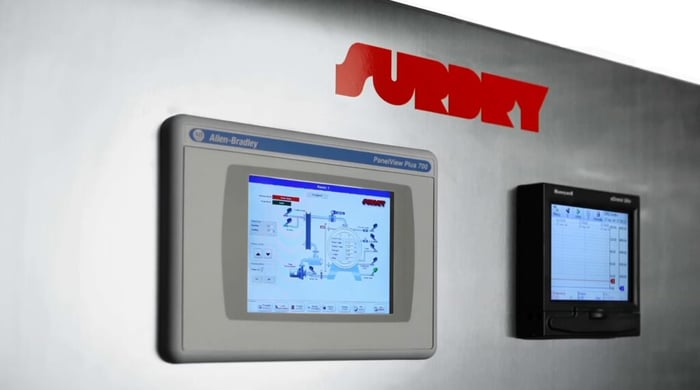Controlling the temperature in the retort is an essential task that should be performed regularly. Undesired temperature variations may lead to a loss of quality and food safety problems, so it is important to keep a proper check on it.

Controlling the temperature will save us from many complications:
Temperature deviations will be avoided
A deviation is any situation in which the retort’s critical process and operating control factors are out of the established range. Temperature is one of the factors that should be monitored, along with pressure and time. If any of these three elements is out of the range indicated in the preparation process, food safety or product quality is at risk.
If the temperature is not supervised, the controller may have a different reading to the real value, according to the master gauge reading, and problems will arise as a result of the deviation.
Appropriate sterilization will be guaranteed
An error in the temperature reading may lead to a failure to reach the appropriate sterilization levels. It should be remembered that the purpose of the retort process is to destroy the micro-organisms that may generate toxins or cause product fermentation. If the appropriate temperature is not reached for the required time, the product may not be suitable for consumption.
On the other hand, if the temperature exceeds the levels specified in the preparation process, too much heat will be applied to the product. This will lead to a deterioration of its organoleptic properties and may even require the affected batch to be discarded.
Stoppages in processes will be avoided
Whenever there is a temperature deviation, an alarm s triggered and it is recorded in the control and supervision system. Different types of action should be taken to fight this, depending on the type of deviation and the moment in the cycle at which it occurs.
If there is a power cut, the process can be continued or aborted depending on its impact, or in other words, depending on the stoppage time, the product phase and the effect on the retort’s temperature and pressure.
According to the magnitude of the deviation, it is likely that the cycle will be aborted and the process will be restarted to ensure the proper sterilization of the product. The Head of Quality is responsible for determining whether the deviation has had an impact and whether the process can be continued, or, on the other hand, the product should be sent to the quarantine area to monitor it and make a decision.
How is the temperature monitored appropriately?
Retort devices are adjusted in accordance with the temperature marked by the master gauge. In order to avoid deviations and maintain the temperature specified in the preparation process, the operator should monitor the master gauge with the maximum frequency and compare it with the reading in the control system.
Optionally, the temperature can be permanently monitored, once in every cycle. This system is based on an alarm that warns the operator to introduce the reading of the master gauge and record the real value in the control system. If the system detects a deviation, a warning will be issued. On the other hand, if the operator fails to record the value, this omission is recorded in the sterilization report and it is the Head of Quality who will make the appropriate decisions.
As part of the temperature control task, it is also essential to carry out proper maintenance of the master gauge. To do so, this device should be sent to an external laboratory for calibration at least once a year.
In short, temperature is a critical element within the sterilization process, along with pressure and time. Therefore, it is crucial to establish regular monitoring routines and strictly follow them, as this is how product quality can be assured.


![[Free Infographic]: Best practices for the proper installation of the retort](https://no-cache.hubspot.com/cta/default/4638724/6a2fec48-53e1-4642-9c20-6d28e1905188.png)
